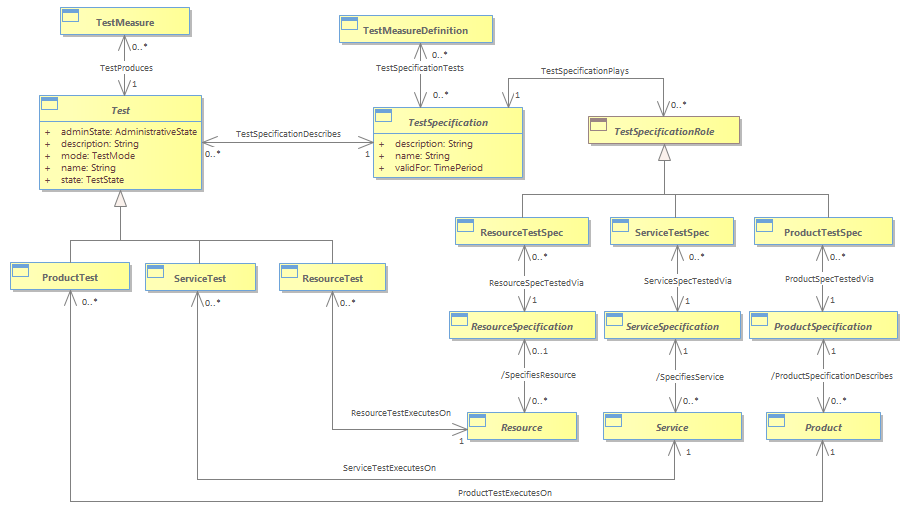Figure PT.01 - Product, Service and Resource Test Entities

|
Project:
|

Figure PT.01 - Product, Service and Resource Test Entities : Class diagram
The tests are divided into three categories:<br/><ol>
<li>Pro-active/Controlled. Tests that are established during the fulfillment process on an entity, and are generally run continuously throughout the lifetime of the entity. These tests are often used to establish correct functioning of the entity under test before providing the entity to a consumer. The results of these tests may be queried at any given time.</li><li>On-demand/Controlled. Tests that are requested at a specific point in time, but that may also be scheduled to actually execute at a future point in time. These tests are normally run as part of assurance processes; they are used to either detect problems, or to guarantee quality, performance, or reliability commitments made to the consumer of the function provided by the entity under test. These tests are controlled in the sense that they are “managed” and can be suspended, resumed, and for which results may be requested.</li><li>On-demand/Uncontrolled. Tests that are requested to execute immediately, and for which the request is blocking until the test completes and returns results in real time. These tests are uncontrolled in that they may not be “managed”.</li></ol> <b>Test ABE</b> is specialised for Product Test ABE, Service Test ABE and Resource Test ABE.<br/><br/>The following Figure shows one way to support tests for Product, Services, and Resources by applying the Entity/EntityRole pattern. This allows the same “Test Specification” to be used for many “Product TestSpecifications”, “ServiceTestSpecifications”, and “Resource TestSpecifications”. <br/>Product, Service, and Resource Tests are defined to be generalizations of the abstract “Test” class. In this way, the “Test” model may be used for the specification of all three types of tests. Each test, such as “ServiceTest” is associated to its relative entity under test, which in this case is “Service”. The relationships therefore between products, services, and resources, are maintained to the associated tests. As an example, a service test measure such as “Frame Loss Ratio” may translate to resource test measures “Number of frames sent” and “Number of frames received”. The metric “Number of Frames Lost” is derived from the resource test measures, and the “Frame Loss Ratio” is further calculated by dividing the number of frames lost by the number of frames sent.<br/> |


